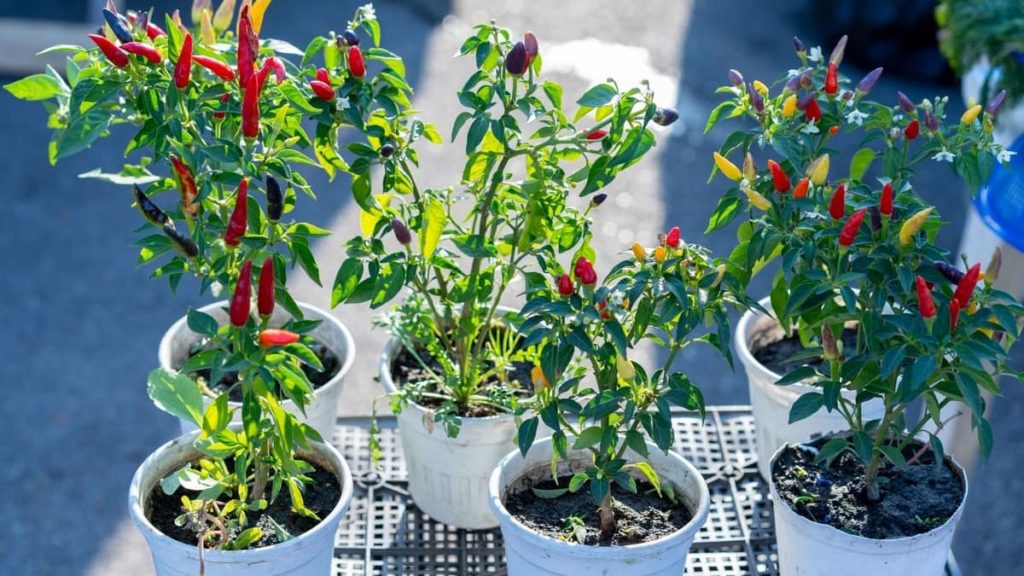For gardeners dealing with short outdoor seasons growing peppers indoors extends the harvest. With the right setup many pepper varieties can thrive inside all year long. When choosing the best peppers for indoor growing, consider the plant’s size, yield, and care requirements. Let’s explore some excellent indoor varieties to try!
Best Compact Pepper Plants
Limited indoor space makes large, sprawling pepper plants impractical. Instead, focus on naturally compact varieties that fruit heavily.
-
Thai – A Southeast Asian favorite, Thai chiles thrive indoors. The 2-3 foot plants flower reliably and produce dozens of small, potent fruits.
-
Habanero – Incredibly hot habaneros grow just 1-3 feet tall. With enough light and heat, they yield dozens of wrinkly peppers.
-
Pequin – Also called bird’s eye chiles, these tiny peppers grow on small bushy plants. Prolific fruits pack huge heat in a petite package.
-
Ornamental – Grown for looks, ornamental peppers stay below 1 foot tall. Varieties like ‘Black Pearl’ and ‘Explosive Ember’ add beauty and harvestable fruits.
High-Yield Peppers
Maximize your indoor space by choosing heavy producing pepper varieties.
-
Jalapeño – A classic pick for stuffing, salsas and more, jalapeños quickly bear clusters of plump peppers on compact plants.
-
Cayenne – Slim, tapered cayennes grow in abundance on medium-sized plants. They store and dry well.
-
Cherry Bomb – These rounded cherry-type peppers churn out masses of petite fruits with a bit of heat. They’re great for pickling.
-
Shishito – Buttery-tasting shishitos are prolific. Let some peppers ripen to red for added sweetness.
Best Care & Culture
Choosing varieties suited to indoor conditions cuts down on problems.
-
Heat lovers – Peppers revel in warmth. Selecting varieties that thrive in 80°F+ temperatures prevents stunted growth.
-
Light intensity – Fruiting indoors requires intense light. Seek out peppers that tolerate close proximity to artificial lighting.
-
Humidity – Some peppers demand more humidity. Prioritize chiles native to tropical or subtropical regions to reduce moisture stress.
-
Airflow – Indoor air lacks airflow. Opt for more disease-resistant varieties that won’t struggle as much without breezes.
More Tips for Success
Follow these tricks to keep indoor peppers happy from seed to harvest:
-
Start seeds 6-8 weeks before desired transplant date.
-
Use a heat mat for better germination rates.
-
Provide strong grow lights and maintain close proximity to seedlings.
-
Transplant to larger containers as plants become rootbound.
-
Maintain warm temperatures and adequate airflow at all times.
-
Pollinate flowers by gently shaking plants to ensure fruit set.
-
Pick peppers promptly to encourage more flowering and fruit production.
With the right pepper varieties and care, your indoor garden can keep yielding hot harvests all year round! Do you have a favorite indoor pepper? Let us know in the comments below!
Item added to your cart
Seed growing tips, recipes & more! Read all Posts »
Best Peppers to Grow Indoors
Want to grow peppers indoors over the winter months? Or maybe year-round? It is possible. Many pepper varieties can live for many years if not exposed to frost. It is important to have good lighting for your indoor peppers. It’s not likely that a sunny window in the winter will give the pepper plant enough hours of light to keep it growing. A lot of people who grow plants indoors put pepper plants under fluorescent or LED lights in the winter to keep them growing and producing. Hydroponic systems can be used indoors or outdoors, and they don’t need soil. This means that soil pests like fungus gnats don’t have to bother you as much.
Tips For Growing Peppers Indoors – 5 Methods For Beginners – Pepper Geek
FAQ
Can you grow peppers indoors all year?
What are the easiest peppers to grow for beginners?
Can you grow peppers indoors by a window?
Can you grow peppers inside with a grow light?
- The Ultimate Guide to Growing Strawberries in Raised Beds - August 8, 2025
- No-Dig Garden Beds: The Easiest Way to Grow a Beautiful Garden - August 6, 2025
- How to Protect and Preserve Wood for Raised Garden Beds - August 6, 2025

